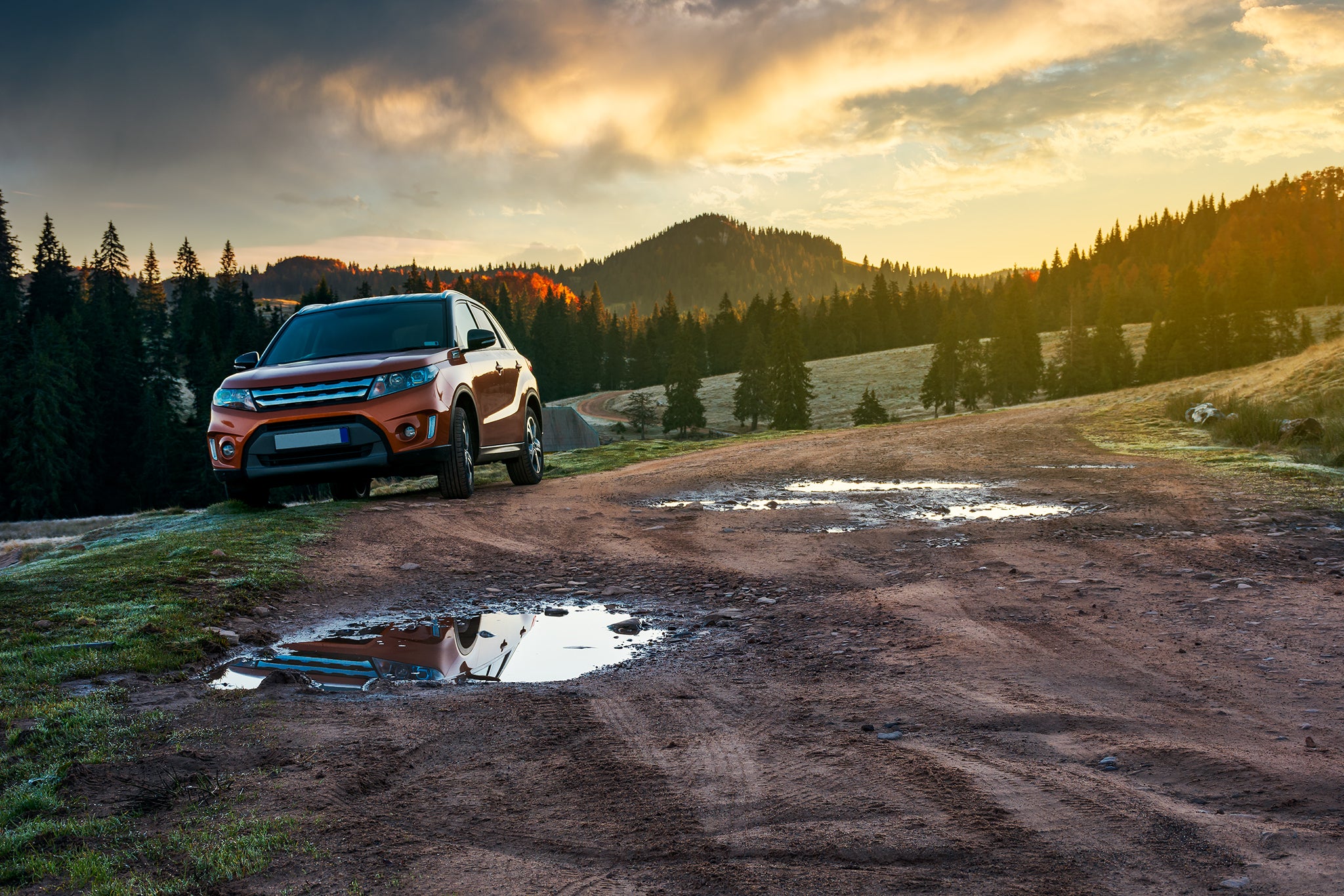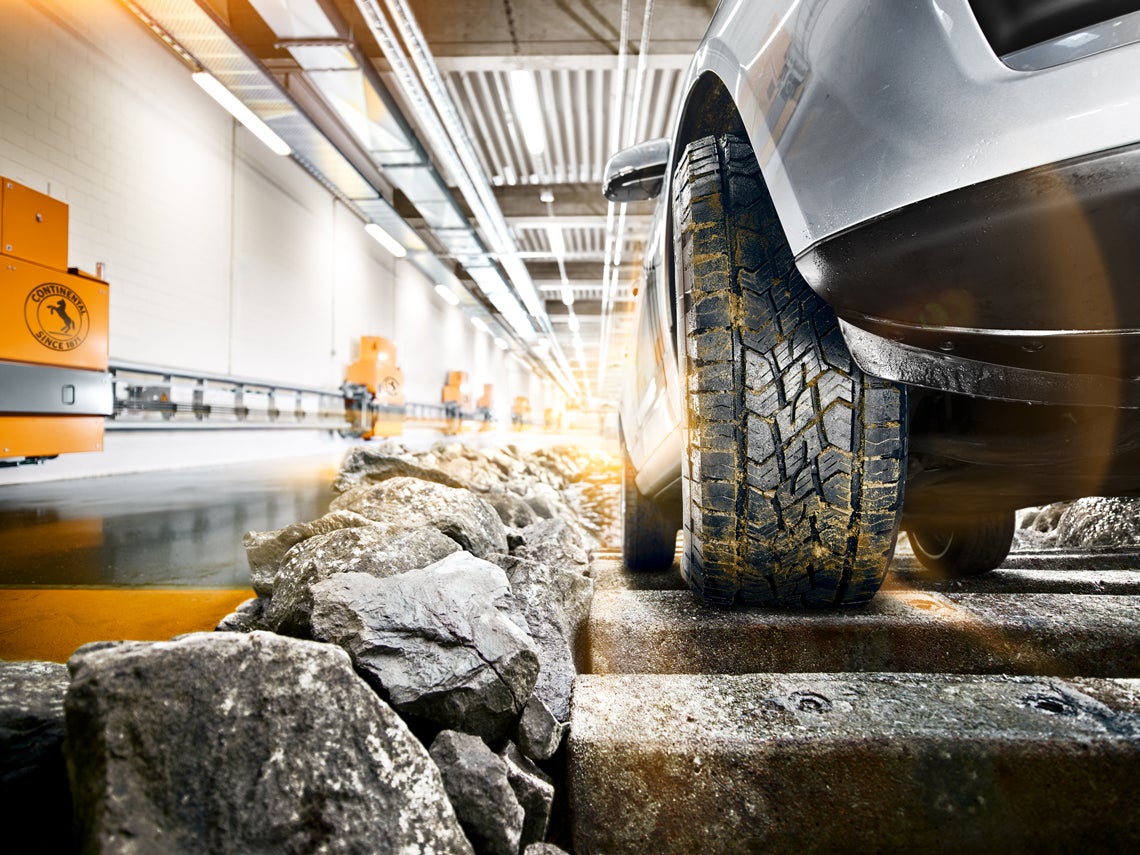
# Tyre Basics
Do all SUVs have four-wheel drive?
We explain the difference between SUV, 4WD and AWD
The answer to the question “are all SUVs 4WDs?“ is pretty simple: No. Not all sport utility vehicles have four-wheel drive. However, once we dig a little deeper, the issue becomes more complicated. After all, in many parts of the world, the term “four-wheel drive” is used interchangeably with the name SUV, at least colloquially. Depending on context, this catch-all category can cover anything from urban crossover SUVs and battery-powered e-hybrids to performance luxury SUVs, including many models that don’t actually have four-by-four capabilities. Let’s take a closer look at the terminology, before clarifying which type of drive is suited to different driving conditions.


SUV, 4WD and all-wheel-drive (AWD) defined: What is an SUV?
Within the car industry, SUV has become the term most widely used to refer to a category of cars that broadly look like off-road vehicles, particularly due to high ground clearance and typically, hatchback look. They often share other characteristics, like spaciousness, suitability for towing and hauling, as well as off-roading abilities and four-wheel drive. However, the more popular SUVs become, the broader the category definition, and the more likely that a car described as an SUV isn’t a four-wheel drive suitable for off-road adventures. Many have full- or partial AWD, others are even two-wheel drives intended only for on-road driving.
Find out more about what makes SUVs so popular here.
What is 4WD?
As the name indicates, four-wheel drive (aka. 4WD/four-by-four/4×4) doesn’t necessarily refer to a vehicle category, but to a specific drivetrain configuration. The drivetrain system transfers engine power to all four wheels, ensuring traction even on challenging, uneven and shifting terrain.

It is typically found in the archetypal off-road SUVs that probably come to mind when you think of adventurous all-terrain driving, like the Toyota Land Cruiser, Jeep Wrangler, Mercedes-Benz G-Class, or the original Land Rover Defender. SUVs with a full-time 4WD system that can’t be switched off are only suitable for drivers who rarely, if ever, drive on paved roads. For everyone else, there’s part-time 4WD, which can be switched on and off manually, as needed.
What is AWD?
All-wheel drive systems are often confused with four-wheel drive, but they function differently and have other advantages and applications. Technically, an AWD drivetrain automatically and electronically distributes power to all wheels as needed.

There are full-time and part-time systems , but the latter are also controlled electronically and activated depending on the driving situation, so no manual intervention is necessary. All-wheel drive vehicles are a much broader category than 4WDs, and are not limited to SUVs. While four-wheel drives excel in off-road conditions, but aren’t particularly useful in many other scenarios, all-wheel drives improve grip and offer traction control in all BUT truly challenging off-road conditions. If you are looking for an on-road car that will enhance the performance of your winter tyres in slippery conditions and can handle the odd gravel track, then this is your best choice.

What’s the difference between an SUV, a 4WD and an AWD?
Returning to our original question, not all SUVs have a four-wheel drive system, but most four-wheel drive vehicles fall within the SUV category. You could probably say that the full-blooded, go-anywhere, do-anything 4x4 off-road adventure wagon is the platonic ideal of an SUV. However, the SUV category has long outgrown its original definition, so today’s car-based, hybrid, crossover, and luxury SUVs are much more likely to have all-wheel drive. Unless you are actually venturing way off the beaten path and driving on seriously challenging terrain, you probably don’t need a 4WD, but AWD can significantly improve the control and grip of your tyres, even when driving on dry pavement.
Related content
-
 2022/09/07Off-road drivingMost SUVs can go off paved roads to a certain degree, but for serious off-roading, you need four-wheel drive and tyres that can tackle any terrain.Read more
2022/09/07Off-road drivingMost SUVs can go off paved roads to a certain degree, but for serious off-roading, you need four-wheel drive and tyres that can tackle any terrain.Read more -
 2022/09/07SUV TyresIf you're looking for new SUV tyres, there are several things to consider to ensure safety and quality.Read more
2022/09/07SUV TyresIf you're looking for new SUV tyres, there are several things to consider to ensure safety and quality.Read more -
 2022/09/07Off-road tyresIf you're planning on driving off the trail with your car, truck or SUV, you need tyres which are appropriate for a whole new set of challenges.Read more
2022/09/07Off-road tyresIf you're planning on driving off the trail with your car, truck or SUV, you need tyres which are appropriate for a whole new set of challenges.Read more